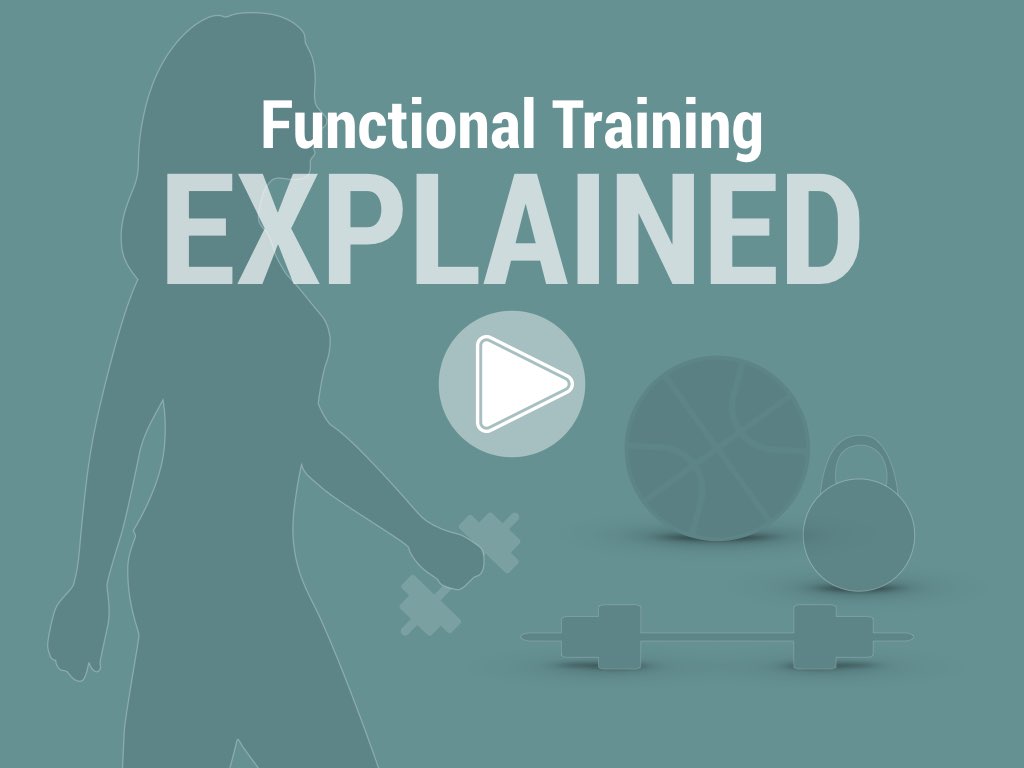Advanced Rehabilitation Near Me
What is functional training?
Functional strength training is a whole-body approach to physical therapy and exercise, building on strength and coordination with direct applications for your daily life. Unlike conventional strength training which isolates specific muscles, functional training involves compound movements that engage multiple muscle groups and joints simultaneously. Beneficial for people of all fitness levels, Functional strength training can reduce the risk of injuries and improve your overall quality of life.
How does functional training help?
Functional strength training uses these techniques:
- Compound Movements: Exercises involve multiple joints and muscles working together. Some examples of functional therapy include squats, lunges, and deadlifts.
- Real-life Activity Simulation: This training streamlines daily actions like lifting, bending, and reaching, making them safer, and reducing the risk of injuries.
- Balance and Stability: Many functional exercises focus on improving balance, coordination, and stability, which are important for everyday movements.
- Core Strength: Emphasis is placed on strengthening core muscles, essential for good posture and effective movement.
- Flexibility and Mobility: Functional strength training incorporates elements that enhance flexibility and mobility.
What should I expect from a functional training session?
Following and initial assessment, a typical Functional Training session involves a series of exercises that mimic everyday movements we do at work or in sports. In the initial stages of the of the program, patients may use only the resistance of their own body weight to facilitate body control, while gradually building strength and stability. When appropriate, your physical therapist may progressively introduce additional resistance such as kettlebells, medicine balls, fitness cables, body boards, etc. The exercises will focus on full body movements that engage multiple muscle groups. Similar to resistance, additional complexity in movement will be introduced progressively. Patients can also expect many exercises that focus on the core to develop abdominal strength, support the spine, and provide power to the rest of the body.
Functional Training Physical Therapy in Washington DC
Our highly skilled staff works with patients one-on-one to develop a functional training program that may be used alone or paired with additional therapeutic techniques such as manual therapy. At Release Physical Therapy, care always begins with a full assessment of the patient’s existing conditions, tolerance to activity, and goals in order to develop a truly individualized treatment plan. Contact us to learn more about functional training or schedule an appointment.
What’s the difference between functional and traditional strength training?
Functional strength training and traditional strength training differ in several key aspects:
Focus and Goals: Functional training focusing on overall functional fitness, balance, and mobility. Traditional training targets muscle mass, strength, and aesthetics for bodybuilding or athletic performance.
Exercises: Functional training uses compound movements like squats and lunges. Traditional training targets specific muscles with isolated exercises, like bicep curls and leg presses.
Equipment: Functional training uses kettlebells, medicine balls, and bodyweight exercises, promoting balance and stability. Traditional training uses machines and free weights for isolating muscles.
Daily Life Application: Functional training improves performance in daily tasks and sports, while traditional training's benefits may not.
Core Involvement: Functional training emphasizes core stability integral to exercises, whereas traditional training works the core separately.
How does functional training improve your life?
The benefits of functional training will significantly improve aspects of your life by enhancing your physical abilities and well-being. Here are some ways it does this:
Improves Daily Activities: By focusing on movements that mimic everyday tasks, functional training makes it easier to lift, bend, reach, and climb stairs, improving overall quality of life.
Reduces Injury Risk: It strengthens muscles, ligaments, and tendons, which can reduce the likelihood of falls and strains.
Enhances Core Stability: Core strength is important for good posture and preventing back pain. Functional training targets core muscles, leading to improved posture and reduced back issues.
Increases Flexibility and Mobility: The movements involved in functional training can enhance your flexibility and joint mobility, making movements smoother and less restricted.
Boosts Overall Strength and Endurance: Functional training improves muscular strength and cardiovascular endurance, leading to better stamina and energy.
Enhances Athletic Performance: For athletes, functional training can lead to improvements in sports performance by enhancing movement efficiency, power, and agility.
Improves Mental Health: Regular exercise, including functional training, is known to release endorphins that reduce stress and improve mood.
Promotes Weight Management: Functional training is effective for burning calories and managing weight.
Functional training makes day-to-day tasks easier and safer while contributing to long-term health and fitness.
What should I expect from a functional training session?
Following and initial assessment, a typical Functional Training session involves a series of exercises that mimic everyday movements we do at work or in sports. In the initial stages of the of the program, patients may use only the resistance of their own body weight to facilitate body control, while gradually building strength and stability. When appropriate, your physical therapist may progressively introduce additional resistance such as kettlebells, medicine balls, fitness cables, body boards, etc. The exercises will focus on full body movements that engage multiple muscle groups. Similar to resistance, additional complexity in movement will be introduced progressively. Patients can also expect many exercises that focus on the core to develop abdominal strength, support the spine, and provide power to the rest of the body.
How often should you do functional strength training?
Functional strength training frequency depends on your fitness level and goals:
Beginners: Start with 2-3 sessions per week to allow your body to adapt and recover.
Intermediate to Advanced: Increase to 3-4 sessions per week as your body becomes accustomed to the training.
Rest and Recovery: For those using functional strength training as advanced rehabilitation, ensure at least one full rest day per week for muscle recovery and to prevent overtraining.
Balance with Other Activities: Adjust the frequency to complement other types of workouts in your routine.
Listen to Your Body: Pay attention to signs of fatigue or soreness, and adjust your training frequency accordingly.
Consistency and Goals: Focus on maintaining regular sessions that align with your fitness goals and lifestyle.
What kinds of movements and exercises are done in a functional training session?
A functional training physical therapy session, like ours at Release PT, incorporates exercises that mimic everyday movements, focusing on enhancing strength, balance, and flexibility. These exercises include multi-joint, multi-muscle movements, like squats, lunges, deadlifts, and push-ups, targeting the entire body. Core strengthening exercises, like planks or rotational movements, also improve stability and balance. Functional training may include dynamic movements like kettlebell swings, medicine ball throws, or resistance band exercises, to improve power, endurance, and agility. Single-leg stands or stability ball workouts enhance body awareness and coordination. Patients can anticipate engaging in core-centered exercises aimed at building abdominal strength, supporting spinal health, and supplying power throughout the body.
Who can functional training help?
Functional training benefits many people including those seeking to improve everyday movement, those who need assistance with weight management, athletes looking to enhance performance, people recovering from injuries who need to improve balance and stability, those who want to achieve increased strength and joint mobility, and anyone who wants to increase overall fitness.
What kind of injuries and conditions can be treated by functional training?
Functional training can be effective in treating and managing a variety of injuries and conditions, particularly those related to musculoskeletal health. It is beneficial for:
Repetitive Strain Injuries: Carpal tunnel syndrome or tennis elbow, where improved muscle function and joint mobility are needed.
Postural Issues: Neck and back pain resulting from poor posture or sedentary lifestyles.
Recovery from Orthopedic Injuries: Fractures, sprains, and muscle tears, where restoring strength and mobility is crucial.
Sports-Related Injuries: Helping athletes recover from injuries like ACL tears or rotator cuff issues, and enhancing performance.
Chronic Pain Conditions: Lower back pain, arthritis, and fibromyalgia, where increasing strength and flexibility helps manage pain.
Balance Disorders: Improving stability and coordination in people with balance impairments.
Post-Surgical Rehabilitation: Aiding recovery from surgeries like joint replacements or spinal surgeries.
Age-Related Degeneration: Helping older adults maintain or regain strength and mobility, reducing the risk of falls.
How long does it take for functional strength training to work?
Results from functional strength training vary based on each person but improved strength, mobility, and endurance are noticeable within a few weeks. Muscle development and overall functional capability may take a few months to manifest. Improved posture, reduced daily discomfort, and balance improvement happen relatively quickly. The key to achieving benefits lies in consistent training, along with a balanced approach to nutrition and rest.
Is functional training safe for everyone?
Functional training is generally safe for most people, but it varies based on personal health conditions, injury history, and fitness levels. People with severe health issues, those recovering from injuries, and pregnant women should consult healthcare providers before beginning. Beginners and older adults should focus on correct technique and work with a Release PT qualified trainer who can provide supervision to ensure a safe workout experience and maximize benefits. Call us today at Release PT to set up an appointment and learn more about how functional strength training can benefit you.
Functional Training Physical Therapy in Washington DC
Our highly skilled staff works with patients one-on-one to develop a functional training program that may be used alone or paired with additional therapeutic techniques such as manual therapy. At Release Physical Therapy, care always begins with a full assessment of the patient’s existing conditions, tolerance to activity, and goals in order to develop a truly individualized treatment plan. Contact us to learn more about functional training or schedule an appointment.








